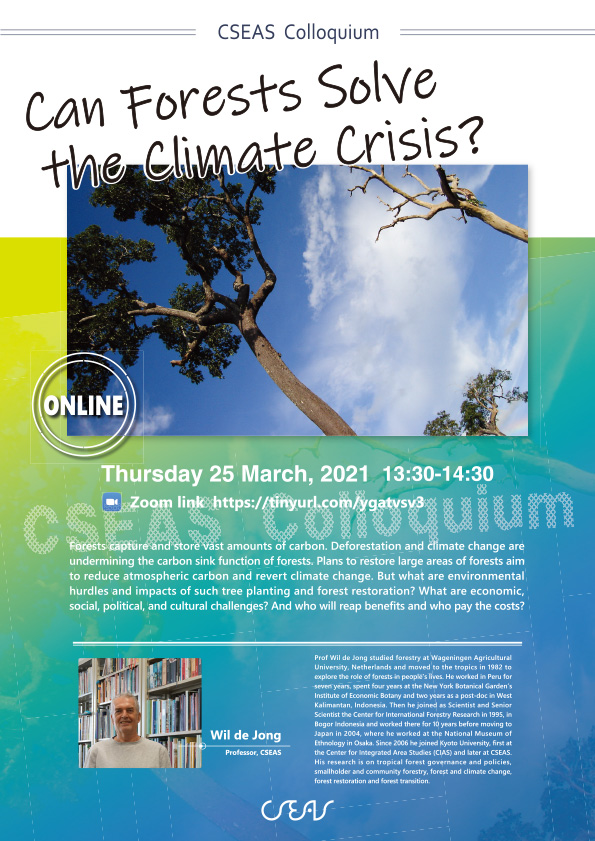Title: Can Forests Solve the Climate Crisis?
Speaker: Wil de Jong Professor, CSEAS
The greatest challenge that the global community needs to address in the next decades is a looming global climate crisis caused primarily by anthropogenic carbon emission. Multiple international initiatives have put their hopes on forests to solve this. This lecture addresses how justified these hopes are and the hurdles that need to be overcome. It briefly reviews the earth carbon stocks and fluxes, and the role that forests play in both. It will look at what predicted climate change may do to forests and their role in regulating atmospheric carbon. The proposals to address climate change by planting vast numbers of trees and restoring large areas of forests will be reviewed. The following questions will be addressed: How large an area of forests or how many trees need to be planted to reduce atmospheric carbon? What are environmental challenges and impacts of such tree planting and forest restoration, including of progressing climate change itself? What are economic, social, political, and cultural challenges? Or, in other words, who will reap benefits and who will pay the costs of these plans?
Bio:
Prof de Jong studied forestry at Wageningen Agricultural University, Netherlands and moved to the tropics in 1982 to explore the role of forests in people’s lives. He worked in Peru for seven years, spent four years at the New York Botanical Garden’s Institute of Economic Botany and two years as a post-doc in West Kalimantan, Indonesia. Then he joined as Scientist and Senior Scientist the Center for International Forestry Research in 1995, in Bogor Indonesia and worked there for 10 years before moving to Japan in 2004, where he worked at the National Museum of Ethnology in Osaka. Since 2006 he joined Kyoto University, first at the Center for Integrated Area Studies (CIAS) and later at CSEAS. His research is on tropical forest governance and policies, smallholder and community forestry, forest and climate change, forest restoration and forest transition.
